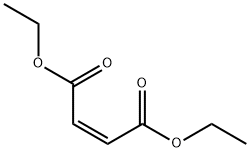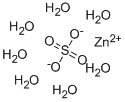Diethyl sulfate , >99.0%(GC) , 64-67-5
Synonym(s):
Ethyl sulfate;Sulfuric acid diethyl ester
CAS NO.:64-67-5
Empirical Formula: C4H10O4S
Molecular Weight: 154.18
MDL number: MFCD00009099
EINECS: 200-589-6
PRODUCT Properties
| Melting point: | -24 °C (lit.) |
| Boiling point: | 208 °C (lit.) |
| Density | 1.177 g/mL at 25 °C (lit.) |
| vapor density | 5.3 (vs air) |
| vapor pressure | <0.01 mm Hg ( 20 °C) |
| refractive index | n |
| Flash point: | 173 °F |
| storage temp. | Refrigerator (+4°C) |
| solubility | soluble in Ether,Alcohol |
| form | Liquid |
| color | Clear |
| Odor | char. faint ether odor, irritating after-effect |
| Water Solubility | 5 g/L (20 ºC) |
| Merck | 14,3130 |
| BRN | 1209714 |
| Dielectric constant | 29.0(20℃) |
| Stability: | Moisture sensitive. May react violently with oxidizing agents. |
| CAS DataBase Reference | 64-67-5(CAS DataBase Reference) |
| IARC | 2A (Vol. 54, 71) 1999 |
| NIST Chemistry Reference | Sulfuric acid, diethyl ester(64-67-5) |
| EPA Substance Registry System | Diethyl sulfate (64-67-5) |
Description and Uses
Diethyl sulfate is a colorless, oily liquid witha faint peppermint-like or ether-like odor. Turns brownon contact with air. Molecular weight=154.20; Boilingpoint=209℃ (decomposes); Freezing/Melting point=225℃; Flash point=104℃; Autoignitiontemperature=436℃. Hazard Identification (based onNFPA-704 M Rating System): Health 3, Flammability 1,Reactivity 1. Insoluble in water; slight decomposition.
The primary use of diethyl sulfate is as a chemical intermediate (ethylating agent) in synthesis of ethyl derivatives of phenols, amines, and thiols; as an accelerator in the sulfation of ethylene; and in some sulfonation processes. It is used to manufacture dyes, pigments, carbonless paper, and textiles. It is an intermediate in the indirect hydration (strong acid) process for the preparation of synthetic ethanol from ethylene. Smaller quantities are used in household products, cosmetics, agricultural chemicals, pharmaceuticals, and laboratory reagents (IARC 1992, 1999, HSDB 2009). In 1966, it was used as a mutagen to create the Luther variety of barley (IARC 1974).
Safety
| Symbol(GHS) |    GHS05,GHS07,GHS08 |
| Signal word | Danger |
| Hazard statements | H302+H312+H332-H314-H340-H350 |
| Precautionary statements | P202-P280-P301+P312-P303+P361+P353-P304+P340+P310-P305+P351+P338 |
| Hazard Codes | T |
| Risk Statements | 45-46-20/21/22-34 |
| Safety Statements | 53-45 |
| RIDADR | UN 1594 6.1/PG 2 |
| WGK Germany | 3 |
| RTECS | WS7875000 |
| TSCA | Yes |
| HazardClass | 6.1 |
| PackingGroup | II |
| HS Code | 29209090 |
| Hazardous Substances Data | 64-67-5(Hazardous Substances Data) |
| Toxicity | LD50 orally in rats: 0.88 g/kg (Smyth) |




